We're looking at replacing the blowed-up rear end in our LeMons car with a Ford 9" from a parts car I just picked up. Today while I was out in my shed poking around for something else, I stumbled upon a Ford 9" chunk I'd picked up forever ago for no good reason (yes, I have a problem). I counted the teeth and spun the gears, so I know it's a 3.00 ratio with no locking. And I took a bunch of pictures:
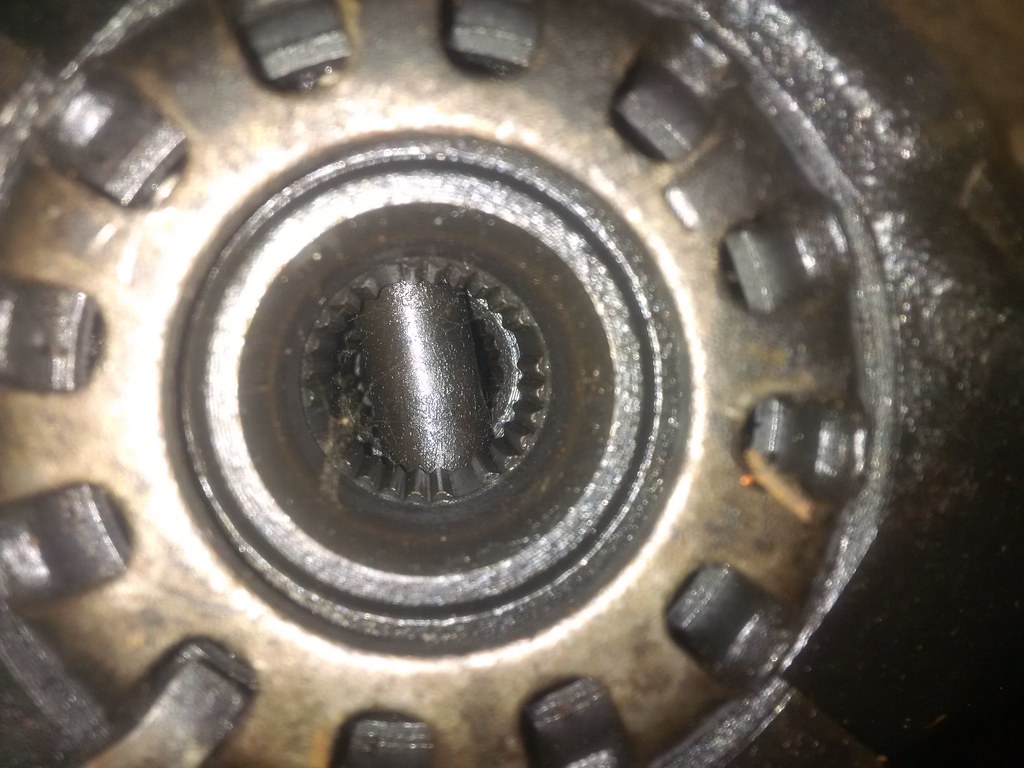
What does this mean? There's 24 splines, in 4 groups of 6. I thought Ford 9's were either 28 or 31 spline. I'm guessing this is a 28, since the axle would have to have 28 splines (24 small ones and 4 large) to interface with this?
What all can you tell me based on these pics?
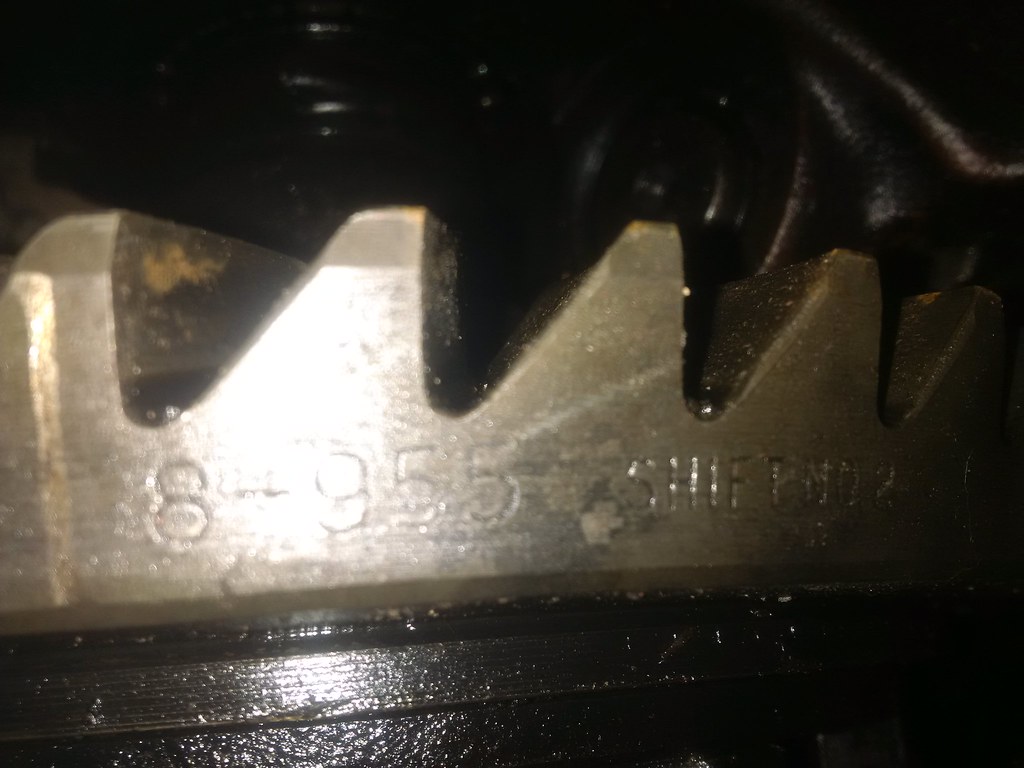
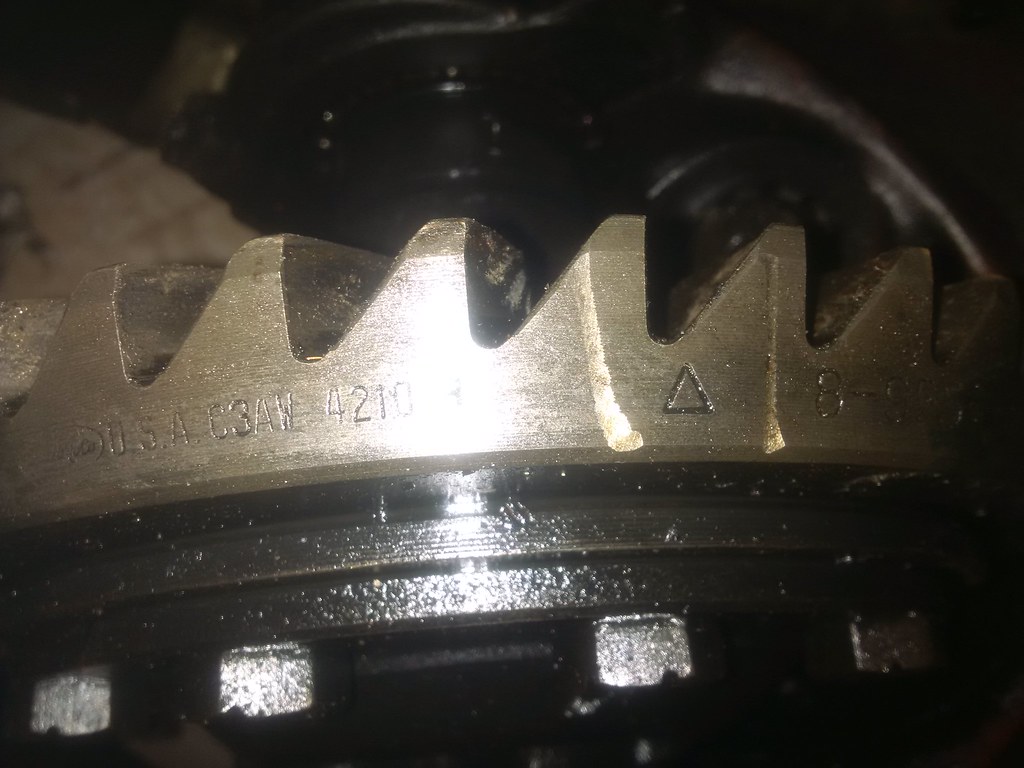
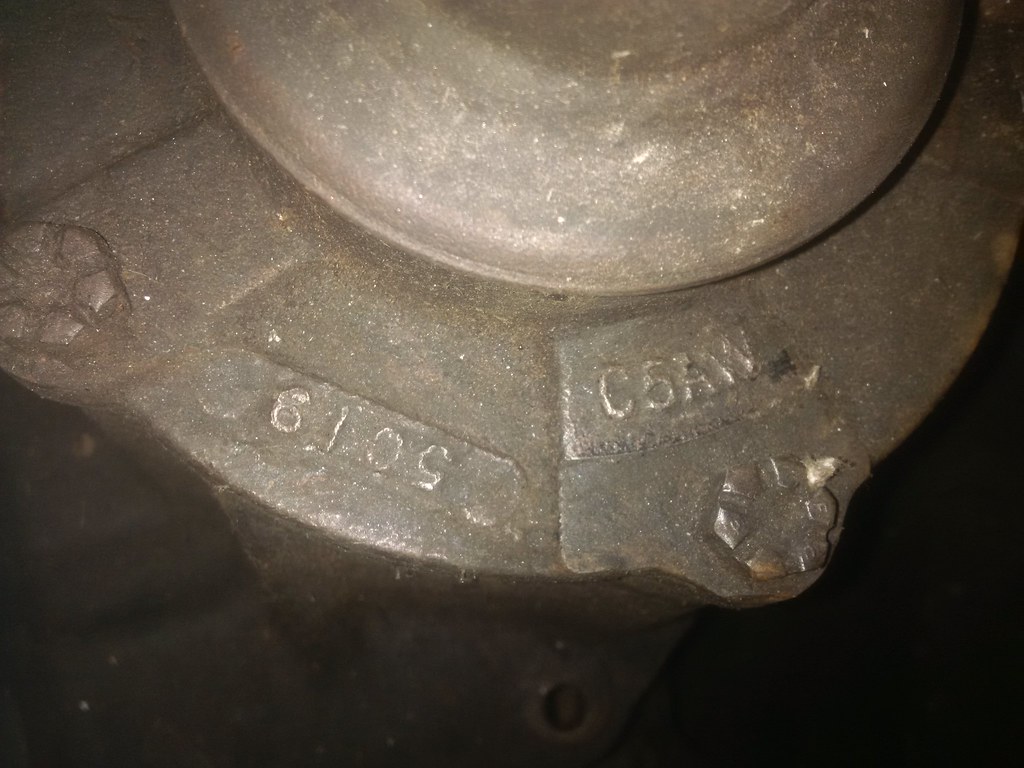
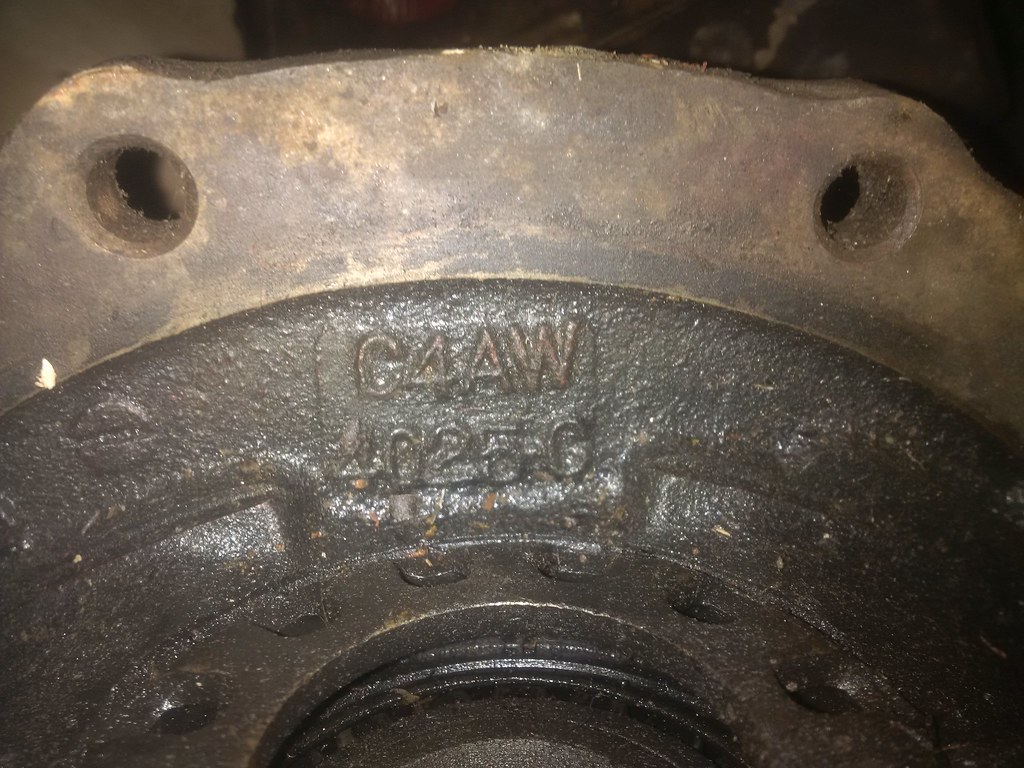
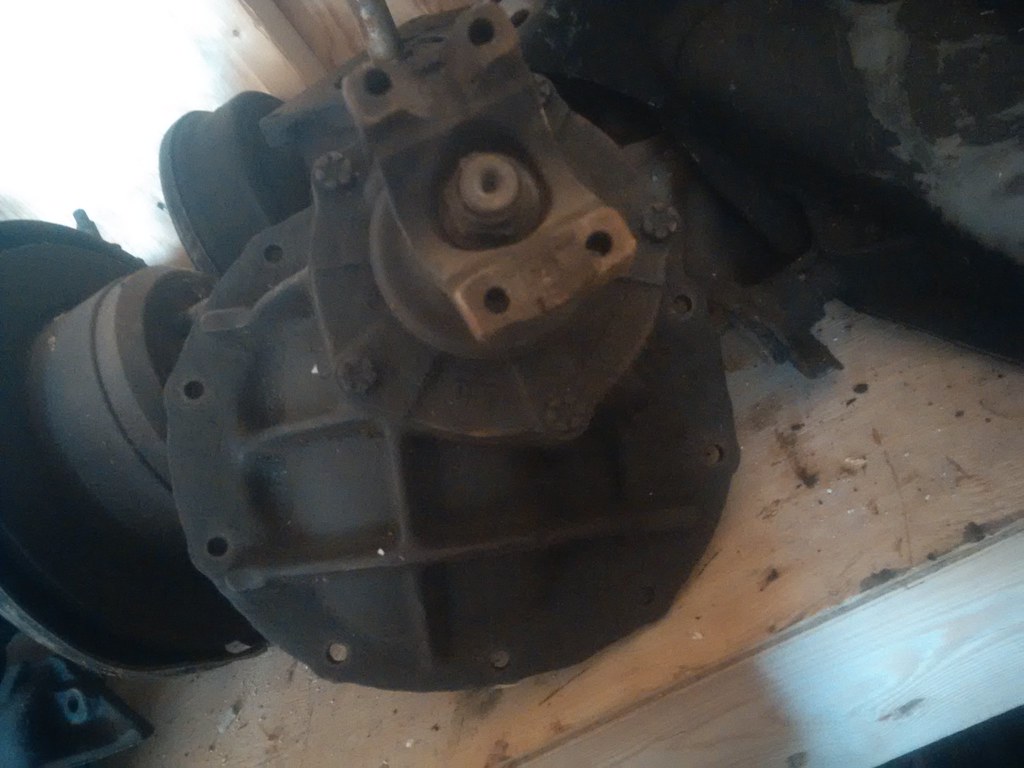
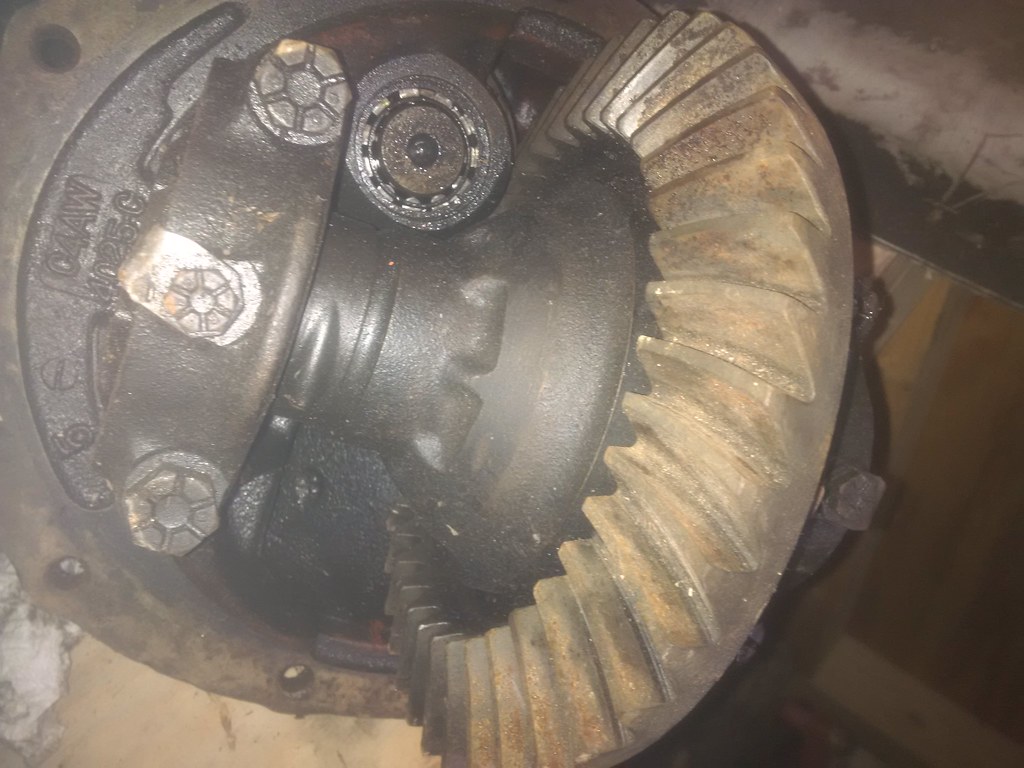
Thanks!!
It's at least from a 1965-era vehicle. 28 spline. Weak case, single vertical rib.
Ranger50 wrote:
It's at least from a 1965-era vehicle. 28 spline. Weak case, single vertical rib.
So the 4 wide splines and 24 narrow ones is normal for a 28 spline?
Does "weak" mean "will hella blow up behind anything other than an emissions-strangled 351" or "will hella blow up if you try to run a 150 shot of nitrous in your high compression 460 running 11's?"
If you look again it's not 4 wide splines but 4 flat spots where a spline could be but Ford choose to leave it blank. Since splines are grooves in the shaft and not peaks you should have no issues installing a 28 spline shaft in that diff.
OK, thanks for the info, all. I need to see if the 9" rear we grabbed for our car is a 28 or 31 spline, anyway. It's still installed in the parts car.
So, to be more specific, this rear will be going behind a 460/C6 combo, probably making around 280 horsepower, in a '75 Ford LTD running the 24 Hours of LeMons. 
28 spline. Has the weak pinion retainer, the weaker side gears, the weaker case, looks like the 3.06" bearing judging from the spanner nut.
PLEASE NOTE - 3.00:1 are hunting gears. They have a timing mark on the inside of the ring and the heal of the pinion. They MUST be realigned if you disassemble. The timing marks are also on 2.50:1, 2.75:1, 3.25:1 and 3.50:1 gears, but they are semi-hunting gears. Only Ford used semi-hunting and hunting gears. I can try to get a picture of the marks and get a picture if you can't find them on your set.
volvoclearinghouse wrote:
OK, thanks for the info, all. I need to see if the 9" rear we grabbed for our car is a 28 or 31 spline, anyway. It's still installed in the parts car.
So, to be more specific, this rear will be going behind a 460/C6 combo, probably making around 280 horsepower, in a '75 Ford LTD running the 24 Hours of LeMons. 
It will be fine if the rust has not damaged the gear tooth surface. Stock centers take way more punishment then you would think.

In reply to wheels777:
Hey...this is Mike, I believe I bought that green 122 wagon from you if this is who I believe it is. ;-)
I did read about the hunting gears, and I did see the timing marks on this gearset.
The rear in our LTD is (soon to be was) the crappy OEM "WER" axle, which uses an 8.7" gear, shares parts with zero other Ford rears, was only available in highway gears, and never had a locking option. It survived 4 or 5 races, first behind the stock 400M (which was good for about 160 HP) and then behind increasingly better 460's until it finally tossed a pinion shaft at the last race.
We picked up a '78 LTD with a 9" in it of unknown provenance, figuring it would be better than the WER in any case, and would bolt right up to our car, having the same attachment points and width. It also came with a rare factory sway bar (the donor car is an ex-ATF car with the heavy duty suspension). The parts car also has a good C6 and a running 400M, so the 9" has lived a pretty easy life up till now. I haven't pulled the gears on this rear yet to see what they are, or if it has a locking diff. Just got the car home a few days ago, and it's been frigid (as you know).
Figuring our tire size (245/50R16) and optimum RPM for the 460 (under 5000) and top end we have seen, either a 3.00 or 3.25 gear would be optimum for the race car. The WER was a 2.75 ratio, which means the 460 would tickle 4000 RPM on the longest straights (~107 mph). Out of the corners it was under 2000, a bit too low for optimum with our setup. I'd probably play it conservatively and go with the 3.00 for one race, and see how the engine handles that, before trying the 3.25. We solved our hot-running issue and have a windage tray on that 460, so it stays right around 190 deg and pushes at least 10 psi of oil pressure for every 1000 RPMs.
Yes I sold you the 122 Wagon.
8.7"....took 10 minutes to clean the vomit off the keyboard
wheels777 wrote:
Yes I sold you the 122 Wagon.
8.7"....took 10 minutes to clean the vomit off the keyboard
So...you're familiar with them then. 
Got any 3.25 chunks and/or limited slip units for a 9" you'd be willing to part with?
I've got a set of 3.50 gears you can have for the cost of shipping... great shape I just pulled them out for the 4.88's that went in.
volvoclearinghouse wrote:
wheels777 wrote:
Yes I sold you the 122 Wagon.
8.7"....took 10 minutes to clean the vomit off the keyboard
So...you're familiar with them then.  Got any 3.25 chunks and/or limited slip units for a 9" you'd be willing to part with?
Got any 3.25 chunks and/or limited slip units for a 9" you'd be willing to part with?
I only have 2 sets of 3.25:1 - 1 with a spool, and it's spare. We swap 2.86, 2.91, 3.00, 3.15 and 3.25 depending on 1 vs 1.5 mile and conditions.
I do have 5+ chunks with 3.50:1. If I get another set of 3.25:1 I will keep you posted
Thanks guys. Yeah, I don't think I want to risk a 3.50 behind our 460. We might hit 110...once. Either that or we'd have to go up to 17" wheels and some larger rolling diameter tires.
The spline count- The chunks are spline dependent, yes? And the limited slip units too, I think.
Gears are swappable though- i.e. one could put 3.25 gears in a 3.00 or a 3.50 chunk, right? Is there a ratio split, i.e., a certain chunk that only works with certain ratios? Probably best to just buy a chunk with the gears already set up, I imagine.
volvoclearinghouse wrote:
Thanks guys. Yeah, I don't think I want to risk a 3.50 behind our 460. We might hit 110...once. Either that or we'd have to go up to 17" wheels and some larger rolling diameter tires.
The spline count- The chunks are spline dependent, yes? And the limited slip units too, I think.
Gears are swappable though- i.e. one could put 3.25 gears in a 3.00 or a 3.50 chunk, right? Is there a ratio split, i.e., a certain chunk that only works with certain ratios? Probably best to just buy a chunk with the gears already set up, I imagine.
9" gears are same diff from 2.50 from 6.50. The steeper the gear you have to clearance the 3rd pinion bearing support - typically from 3.89 and numerically higher. The high gears (numerically lower) you need to watch the bottom of the case. We had to remove a full 1/8" out of the aftermarket case when the 2.86:1 were installed.
Here's what 460 cubic inches of Ford power does to a WER rear end pinion:
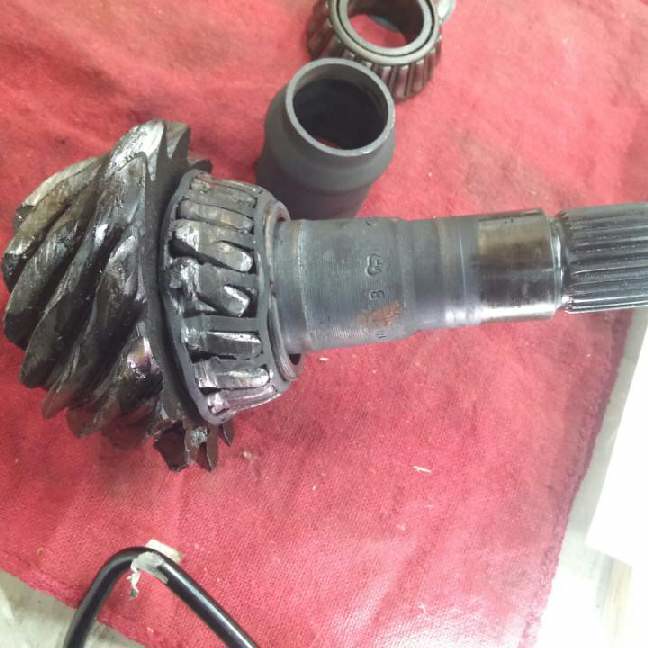
So, we picked up this parts car...
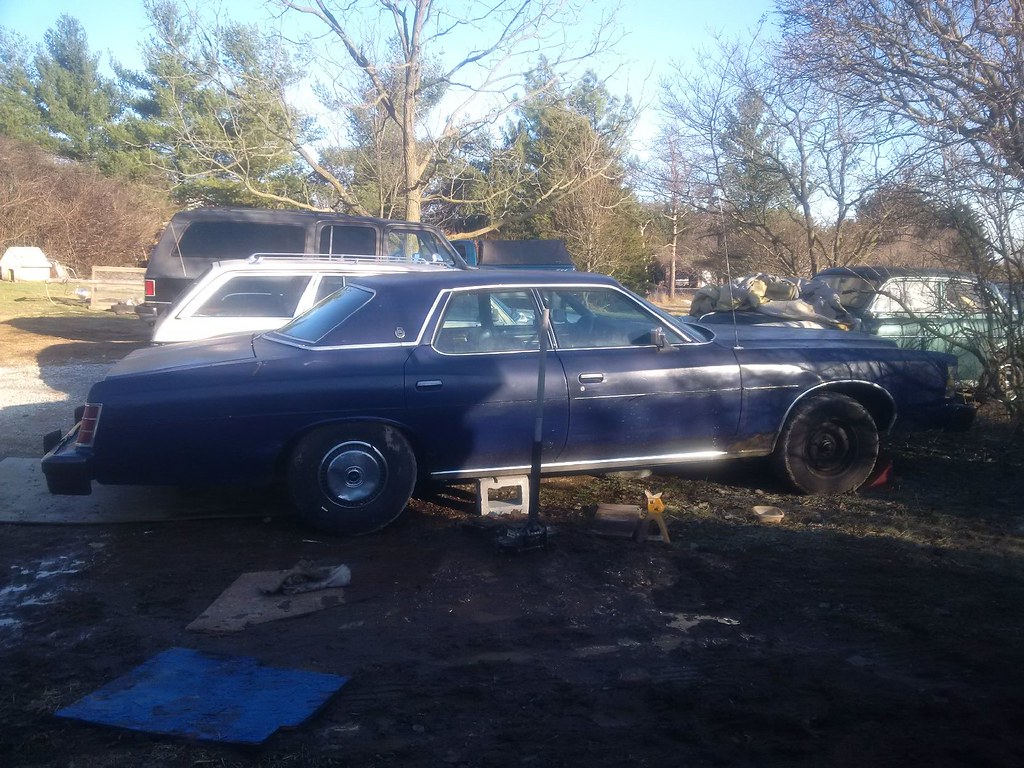
And grabbed the 9" rear out of it. Since the parts car is the same body style as our LeMons car, the rear end should bolt right up.
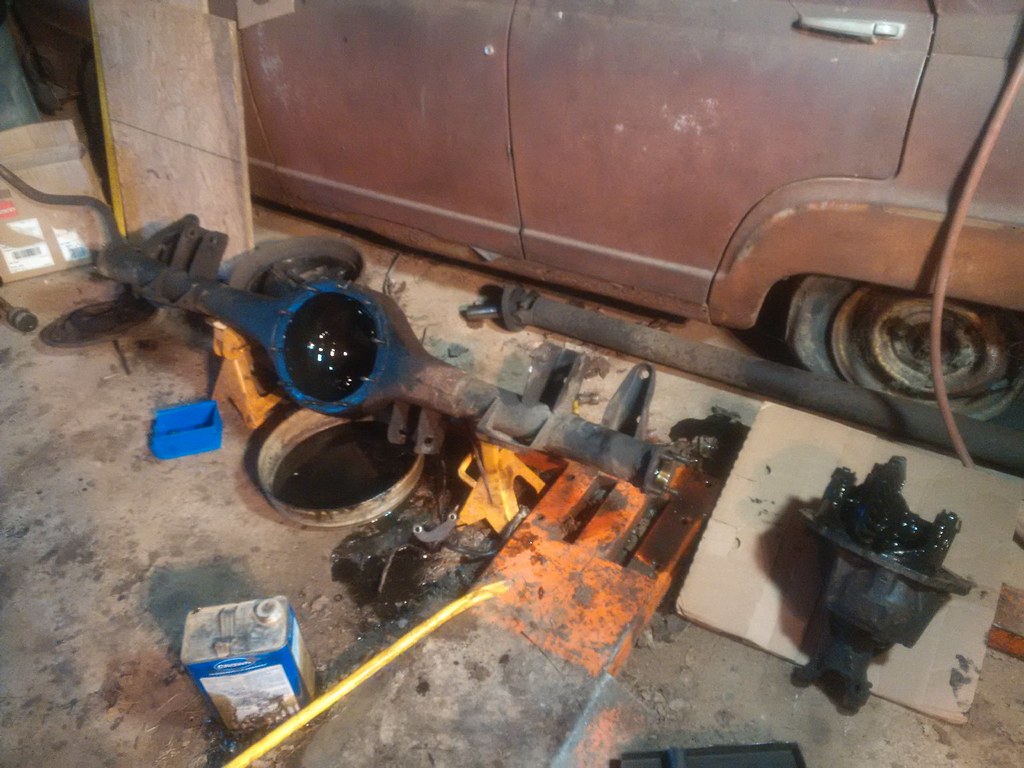
It's a 28 spline rear with 3.00 gears, open diff. The plan is to grab a 28 spline clutch LSD, replace the brakes with a disc setup (using an 11" rotor and GM Metric calipers), renew the bearings and suspension bushings, and plug the rear into our LeMons car.

An issue: some of the rear disc brake conversion setups I'm seeing may not work with our axles, being 5 x 5 bolt pattern. The problem is the diameter of the axle flange that the wheel stud go through may be too large. I need to measure ours and see if it's too big.
Another option looks like the 94 to 96 Impala SS rear brake setup (disc). Anyone have any experience with these, or know who/where to get a caliper bracket that would adapt to Big Ford (old) axle tube bolt pattern?
can you get discs out of a continental? i have a 5x5 factory disc brake 9" from a late 70's continental here that i'm swapping into my chevy truck.
or you could grab impala rotors and get some generic weld on caliper brackets with matching $12 gm metric front calipers.
The 70's Ford rear brakes are hard to find, heavy, and parts are getting scarcer.
Your second idea has merit. Lots of it. I wonder what the swept dimensions of the GM metric caliper are compared to the Impala rear caliper (which is like $80).
Sidebar: somebody want to explain to me what is meant by a "hunting" gear and "Semi-hunting" gear set? Nothing to do with deer or a transmission randomly shifting up and down, I'm guessing....
ultraclyde wrote:
Sidebar: somebody want to explain to me what is meant by a "hunting" gear and "Semi-hunting" gear set? Nothing to do with deer or a transmission randomly shifting up and down, I'm guessing....
Even-numbered ratio. Ever notice how gear ratios are pretty much always random seeming numbers rather than nice, clean, even integers? That's done to prevent the same teeth mating up with each other every single revolution (or I guess multiple times per revolution), which can cause uneven wear patterns. By using an odd number, you're ensuring each tooth matches up with a different partner each time around, thereby spreading the wear from any manufacturing anomalies out over the whole set of teeth..
EDIT: I don't think I've ever actually heard the term "hunting ratio" either, but I'm assuming that's what it's referring to from the context.
Yup, that's a hunting ratio. 3.00 ratio has 39 teeth on the ring and 13 on the pinion, so the same teeth are always meshing. IDK why Ford chose to do this.
Ratios like 3.25 and 3.50 are semi-hunting, but I'd have to google to fully explain that. I know Wheels knows...
ultraclyde wrote:
In reply to Furious_E:
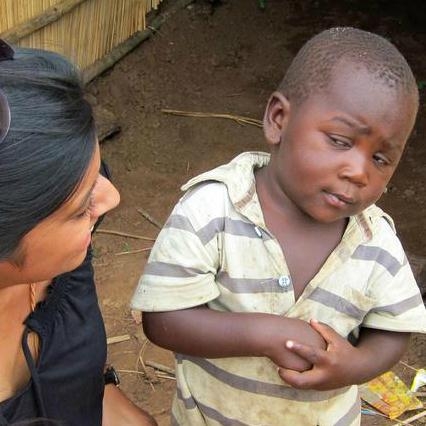
I sense a bit of skepticism in your reply...

volvoclearinghouse wrote:
Yup, that's a hunting ratio. 3.00 ratio has 39 teeth on the ring and 13 on the pinion, so the same teeth are always meshing. IDK why Ford chose to do this.
Ratios like 3.25 and 3.50 are semi-hunting, but I'd have to google to fully explain that. I know Wheels knows...
So semi-hunting...
Let's say we've got 12 "teeth" on the pinion and 39 on the ring (3.25 ratio.) Imagine each tooth on the ring and pinion are numbered sequentially around the circumference of each of the gears. "Tooth 1" on the pinion mates with teeth 1, 13, 25, and 37 on its first revolution. On its second revolution, it will mate with teeth 10, 22, and 34. On its third, teeth 7, 19, and 31. On its fourth, teeth 4, 16, and 28. On the fifth revolution, tooth 1 on the pinion is back with tooth 1 on the ring.
So, again, its a repetitive pattern of specific teeth mating with each other, rather than each tooth of the pinion having an opportunity to mate with (and wear against) each tooth on the ring. Granted, each pinion tooth gets to mate with a larger set of ring teeth than if it were an even integer, but the same problem still exists. Thus, you get an uneven wear pattern on the gear set.




































